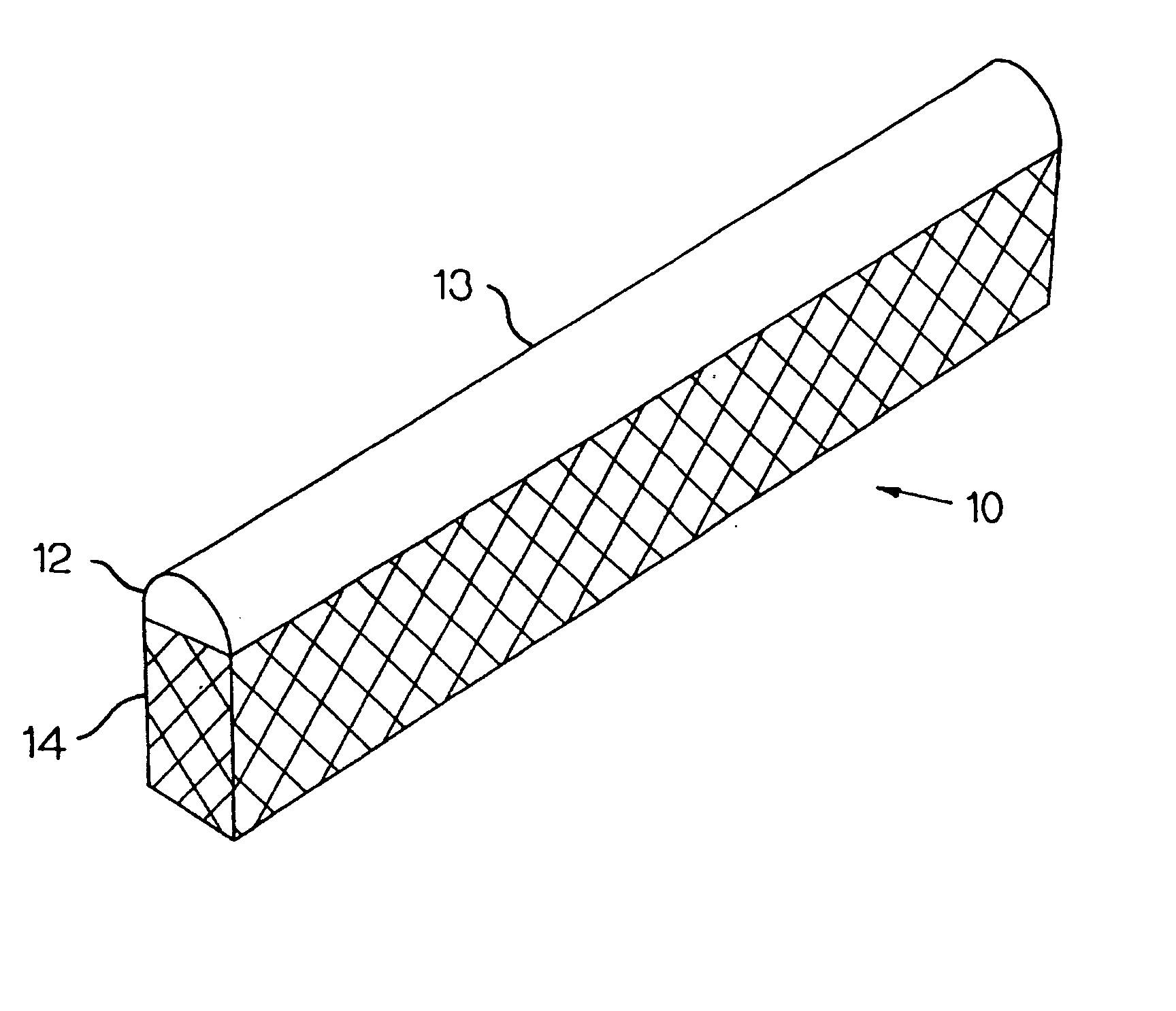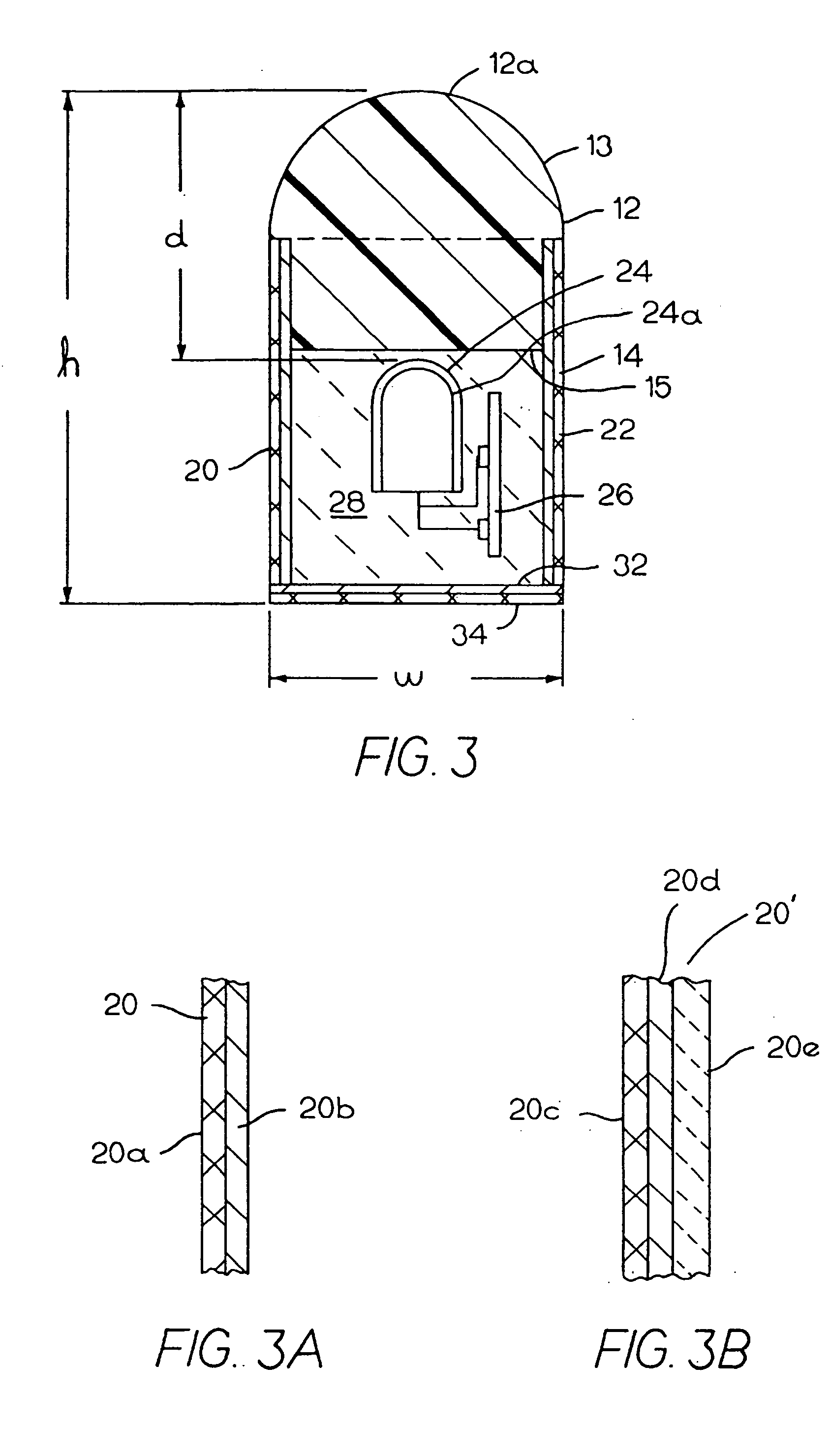Illumination device for simulation of neon lighting
a neon lighting and illumination device technology, applied in the field of simulation of neon lighting, can solve the problems of difficult fabrication of neon lighting structures, high cost of neon lighting package and ship, and extremely awkward initial handling, installation and/or replacement of neon lighting structures
- Summary
- Abstract
- Description
- Claims
- Application Information
AI Technical Summary
Benefits of technology
Problems solved by technology
Method used
Image
Examples
Embodiment Construction
[0034] To provide the desired result, i.e., an illumination device that is an effective simulator of neon lighting, it is important that the proper materials be selected for the component parts and those parts appropriately and geometrically positioned so that the resulting illumination device has an essentially uniform light intensity distribution pattern over the entire surface with the maximum obtainable brightness. To accomplish this, it is necessary to use a high intensity but dimensionally small light source together with an element that acts both as an optical waveguide and light scattering member, but permits light to exit laterally out of its surface (a “leaky waveguide”). By placing the light source contiguous such a leaky waveguide in a specific manner so as to cause the waveguide to uniformly glow over its lateral surface while maximizing the amount of light exiting the surface, applicants are able to obtain an illumination device that rivals or surpasses the uniform glo...
PUM
| Property | Measurement | Unit |
|---|---|---|
| width | aaaaa | aaaaa |
| width | aaaaa | aaaaa |
| width | aaaaa | aaaaa |
Abstract
Description
Claims
Application Information
 Login to View More
Login to View More - R&D
- Intellectual Property
- Life Sciences
- Materials
- Tech Scout
- Unparalleled Data Quality
- Higher Quality Content
- 60% Fewer Hallucinations
Browse by: Latest US Patents, China's latest patents, Technical Efficacy Thesaurus, Application Domain, Technology Topic, Popular Technical Reports.
© 2025 PatSnap. All rights reserved.Legal|Privacy policy|Modern Slavery Act Transparency Statement|Sitemap|About US| Contact US: help@patsnap.com



